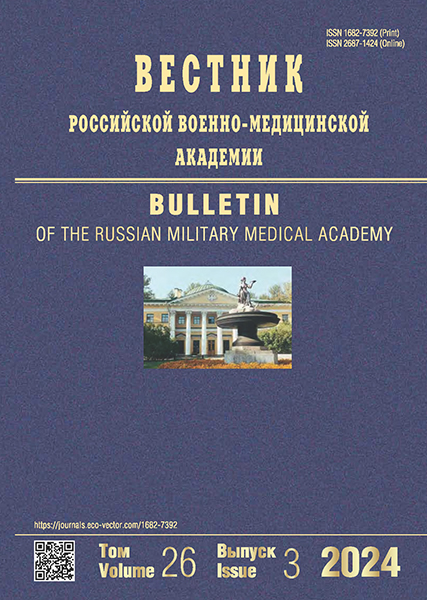改进越南空军飞行员高空飞行心理生理训练系统
- 作者: Blaginin A.A.1, Vu Q.H.1
-
隶属关系:
- Kirov Military Medical Academy
- 期: 卷 26, 编号 3 (2024)
- 页面: 427-436
- 栏目: Review
- ##submission.dateSubmitted##: 18.01.2024
- ##submission.dateAccepted##: 06.06.2024
- ##submission.datePublished##: 06.09.2024
- URL: https://journals.eco-vector.com/1682-7392/article/view/625765
- DOI: https://doi.org/10.17816/brmma625765
- ID: 625765
如何引用文章
详细
在 "飞行员-飞机-环境 "系统中,飞行员是决定性的一环,在确保该系统的可靠性方面发挥着重要作用。在飞行过程中,飞行员在不断暴露于不利因素的条件下工作。在这方面,飞行员职业活动的特点是情绪高度紧张、身体和精神压力明显。考虑了高空因素对飞行员健康和性能的影响,以及紧急情况下高空飞行的结果。在这些飞行中(海拔超过 4000 米),最危险的情况之一是机舱紧急减压。这将导致爆炸性减压,从而导致飞行员死亡和飞机失事。气压分压的降低会导致急性缺氧,而气压迅速降低会导致高原减压病。介绍了飞行员在高空和平流层飞行中使用的防护装备。分析了高空飞行的心理生理训练系统和方法,其中包括理论培训、让飞行员熟悉缺氧对机体的影响、评估气压室上升过程中对中等程度缺氧的耐受性、选择和安装防护设备、超压下的呼吸和语言训练。文章揭示了越南社会主义共和国空军飞行员心理生理训练医疗保障方面的不足。在对现代方法进行全面分析的基础上,证明了改进飞行医疗保障和越南空军飞行员高空飞行心理生理训练系统的必要性。
全文:
作者简介
Andrey A. Blaginin
Kirov Military Medical Academy
Email: blaginin60@rambler.ru
ORCID iD: 0000-0002-3820-5752
SPIN 代码: 2747-0146
Scopus 作者 ID: 6507088650
MD, Dr. Sci. (Med.), Dr. Sci. (Psy.), professor
俄罗斯联邦, Saint PetersburgQuang H. Vu
Kirov Military Medical Academy
编辑信件的主要联系方式.
Email: vmeda-nio@mil.ru
ORCID iD: 0009-0007-1574-8811
SPIN 代码: 5928-5521
graduate student
俄罗斯联邦, Saint Petersburg参考
- Zinkovskaya SM. Systemic study of human factors in hazardous occupations [dissertation abstract]. Moscow; 2007. 45 p. (In Russ.) EDN: NIZUDZ
- Barinov SV, Zhiltsov VN, Kashmin MG. Pilot reliability in the system «pilot ― aircraft». Journal «New Science: Current state and ways of development». 2016;7(1):10–12. (In Russ.)
- Blaginina EA. Psychophysiological features of aerospace specialists with functional disorders of vegetative nervous system and their correction by the method of hypoxic trainin [dissertation]. Saint-Petersburg; 2011. 120 p. (In Russ.) EDN: FUZIUD
- Isaev AV. Reliability of flight personnel as a factor of ensuring flight safety. Journal of Civil Protection. 2020;4(3):346–352. (In Russ.) EDN: OWUETW doi: 10.33408/2519-237X.2020.4-3.346
- Zhdanko IM, Isaenkov VE, Vorona AA, et al. Professional reliability of a military pilot: medical and socio-psychological aspects. Military Medical Journal. 2016;337(6):30–36. EDN: WLBOWT doi: 10.17816/RMMJ73645
- Li G, Baker SP, Lamb MW, et al. Human factors in aviation crashes involving older pilots. Aviat Space Environ Med. 2002; 73(2):134–138.
- Sukhomlinova AM. Investigation of aircraft accidents in modern Russia. Advanced science: Collection of articles of the International Scientific and Practical Conference. Penza: Science and Enlightenment; 2020:125–127. (In Russ.) EDN: DRZWEJ
- Medenkov AA. Pilot reliability: issues of psychophysiological training. Human factor: problems of psychology and ergonomics. 2007;1-1(38):70–75. (In Russ.) EDN: LGLAXD
- Dvornikov MV, Medenkov AA, Nesterovich TB. Psychophysiological resources and reserves for increasing flight safety. Military Medical Journal. 2017;338(3):51–58. (In Russ.) EDN: YKQPPJ
- Ponomarenko VA. Conception of professional health and perspectives of practice of military aviation medicine. Military Medical Journal. 2006;327(7):63–66. (In Russ.) EDN: HUZBGP
- Ushakov IB, Pham Xuan Ninh, Bukhtiyarov IV, Ushakov BN. Adaptive process in Vietnamese military pilots during the flights on modern russian aircraft. Military Medical Journal. 2013;334(4):32–39. EDN: RQCIQP doi: 10.17816/RMMJ74388
- Ushakov IB, Chernyakov IN, Shishov AA. Physiology of high-altitude flight. Voronezh: Istoki; 2007. 148 p. (In Russ.)
- Dvornikov MV, Volovik YuA, Matyushev TV. Instructive story of one high-altitude flight: decompression sickness in an aircraft crew and its consequences. Military Medical Journal. 2019;340(3):50–54. (In Russ.) EDN: ZALUVF
- Westendorp RG, Blauw GJ, Frölich M, Simons R. Hypoxic syncope. Aviat Space Environ Med. 1997;68(5):410–414.
- Kingsley T, Kirchoff R, Newman JS, Chaudhary R. Demystifying airline syncope. World J Cardiol. 2020;12(3):107–109. doi: 10.4330/wjc.v12.i3.107
- Chernyakov IN, Shishov AA, Prodin VI. On the possibility of a pilot recognizing hypoxia in high-altitude flight. Military Medical Journal.1991;7:64–66. (In Russ.)
- Vann RD, Butler FK, Mitchell SJ, Moon RE. Decompression illness. Lancet. 2011;377(9760):153–164. doi: 10.1016/s0140-6736(10)61085-9
- Alea K. Identifying the subtle presentation of decompression sickness. Aerosp Med Hum Perform. 2015;86(12):1058–1062. doi: 10.3357/AMHP.4279.2015
- Allan GM, Kenny D. High-altitude decompression illness: case report and discussion. CMAJ. 2003;169(8):803–807.
- Bodrov VA, Ponomarenko VA. Psychophysiological training of flight personnel: methodical manual for aviation doctors. Moscow; Leningrad; 1989. 170 p. (In Russ.)
- Chernikov IN. Means of pilot’s life support in high-altitude flight. In: Aviation medicine: manual. Moscow: Medicine; 1986. P. 57–75. (In Russ.)
- Shishov AA, Bogomolov AA. Physiological substantiation of adequate emergency escape in high-altitude flight. Aerospace and Environmental Medicine. 2020;54(2):65–71. EDN: WGRLCK doi: 10.21687/0233-528X-2020-54-2-65-71
- Kukushkin YuA, Dvornikov MV, Bogomolov AV, et al. Features of decision support for eliminating special events and dangerous conditions of a pilot in high-altitude flight. Safety and emergencies problems. 2009;(6):74–79. (In Russ.) EDN: MGULMX
- Muehlemann T, Holper L, Wenzel J, et al. The effect of sudden depressurization on pilots at cruising altitude. Adv Exp Med Biol. 2013;765:177–183. doi: 10.1007/978-1-4614-4989-8_25
- Files DS, Webb JT, Pilmanis AA. Depressurization in military aircraft: rates, rapidity, and health effects for 1055 incidents. Aviat Space Environ Med. 2005;76(6):523–529.
- Blaginin AA, Zhiltsova II, Emelyanov YuA. Issues on decompression safety of flight crew. Military medical journal. 2017;338(7):42–45. EDN: ZVCLMX doi: 10.17816/RMMJ73430
- Chernyakov IN, Shishov AA. Maintaining pilot viability and performance with an oxygen equipment kit in case of emergency cabin depressurization. Russian Journal Of Occupational Health And Industrial Ecology. 1995;(3):25–28. (In Russ.)
- Medenkov AA, Dvornikov MV. The formation of domestic aviation psychophysiology. In: Modern contradictions and directions of development of aviation and space medicine: materials of the scientific and practical conference dedicated to the 60th anniversary of the Department of Aviation and Space Medicine of the Military Medical Academy named after S.M. Kirov. Saint Petersburg. 2018:202–208. (In Russ.) EDN: YWKERF
- Boucsein W, Koglbauer I, Braunstingl R, Kallus KW. The use of psychophysiological measures during complex flight manoeuvres-an expert pilot study, In: Westerink J, Krans M, Ouwerkerk M, (eds). Sensing emotions: the impact of context on experience measurements. Philips research book series: Springer; 2011. Vol 12. P. 53–63. doi: 10.1007/978-90-481-3258-4_4
- Air Force/Department of defense medical examiner regulations. Hanoi: People’s army publishing house; 2015. 208 p. (In Vietnamese).
- Dvornikov MV, Medenkov AA, Stepanov VK. Selection and fitting of protective equipment. Training in breathing under excess pressure. Moscow: Polet; 2001. 160 p. (In Russ.)
补充文件








